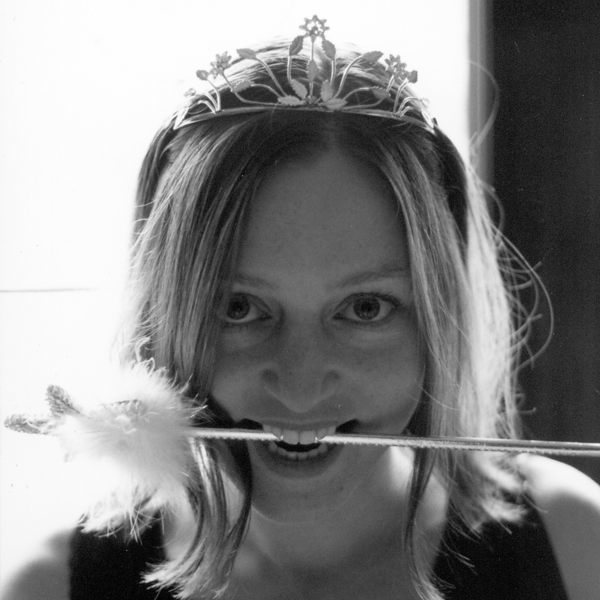The Love of a Good Woman: The Incredible Hulk vs. Wall-E
This summer has been rich with decent blockbusters, which isn’t something you can always say (I’m looking at you, 2006). But today it’s the biggest of the big that’s come to town: Marvel Studios’ reboot of the Hulk vs. Can-they-do-no-wrong?-Pixar’s Wall-E.
Damn.
First up, the Incredible Hulk. After deciding that Ang Lee’s version of Hulk could go take a running jump, Marvel went ahead and made the Hulk anew – sort of. It’s not quite a remake, since we are treated to a recap of events in the first Hulk, but it isn’t a sequel in the true sense, either, since the storyline doesn’t advance in the slightest. Edward Norton plays Bruce Banner this time, and he’s an odd choice for the role. He’s got the nerdy scientist persona down, as well as the edginess that must come from knowing that your Hyde side can break out at pretty much any moment. Well played, Mr. Norton. Also playing major roles in the Hulk’s story are Liv Tyler as the breathy Betty Ross, and Tom Roth as a villainous cartoon asshole who exists solely for the needs of the plot. More on them in a sec.
The main problem with this Hulk is that it’s stuck firmly in PG-13 mode. The restrictions placed on the story so that it could get past the censors to the twelve-year-olds in the popcorn line starve the story. The fights with the Hulk and the Abomination resemble Charlie’s Angels-esque slugfests more than superhumans vying for superiority. The sexual tension between Bruce and Betty never rises past middle-school dance level. In fact, the whole movie feels way too safe. The Hulk is not a story about safety – it’s about how it feels to be living on top of a metaphorical volcano, or how it feels to know that one day you will snap, and people will die. The version, cocooned in PG-13’s warm embrace, never hits the heart of the Hulk’s story.
If you want to hit the heart of a story, you’ll have to see Wall-E. Pixar’s latest film, Wall-E is remarkably gusty for a company better known for gentle, fun kids’ flicks like Toy Story. Wall-E is a post apocalyptic love story. Let me say it again: a post apocalyptic love story. It’s also a fable about humanity’s greed and short-sightedness, but that’s not the heart of the story. Except that it is. And, in case you were wondering, it’s funny as hell, and the kids will like it. For any other company, this would be a recipe for suicide. But this is Pixar we’re talking about, a company whose films are generally so far above the norm that the question reviewers ask is not “Was it a good film?” but rather “Is it Pixar’s best ever?”
Wall-E is a little trash-compacting robot whose job is to clean up a planet after humans have left it a trash-laden wreck that can’t support life. After 700 years, he’s the only robot left. Save for a wee, silent cockroach friend, Wall-E spends his days alone, carrying out his directive and collecting interesting scraps for his personal amusement; his nights are spent watching a battered VHS copy of Hello, Dolly!. Then one day, a strange new ‘bot that looks and sounds like an iPod appears and Wall-E’s life changes forever.
So let’s go back to Betty Ross for a moment, shall we? In the Hulk, Betty is the focus of Bruce’s quest. He wants to unHulkify himself in order to be a safe date for Betty. That’s all. Boy loves girl. Boy goes on quest to become worthy of girl. It’s a simple and classic motivation, but it breaks down because Liv Tyler can’t sell a Betty who’s worth the bother. Betty Ross is supposedly a hotshot scientist (probably a biologist -- exactly what kind, we’re never quite told), a Strong Woman, and sexy to boot. Except every action her character takes belies that summary. She’s under the thumb of her military hotshot father, railing breathily against his callous ways but never able to actually oppose him – only to pout and try to make him feel bad for making her cry. Same goes for the strength of her commitment to Bruce Banner or her faith in his quest – our first glimpse of her through Bruce’s vision is when she’s on a date with another guy. Even when the leads inevitably get back together, Betty doesn’t offer much to aid Bruce beyond moral support and a walk to the train station.
On the other hand, we’ve got Eve, the iPod robot from Wall-E. Despite the fact that she never utters more than two different words throughout the whole film, Eve manages to convey a tough-as-nails sensibility, and proves that she’s willing to go from one end of the galaxy to the other to fight for what she believes in. Her defiance of the robotic “directive” seems much more daring and dangerous than Betty’s childish attempts at clandestine superhero support. The high cost of failure also hovers like a doom above the characters, (robot and human alike) in Wall-E, infusing the film with a poignancy and seriousness that lasts long after the credits roll.
In the end, Eve and Betty tell you a lot more about the film studios that created them than about the state of women in the 21st century. Marvel, perhaps too busy sweating over the sequel/reboot conundrum, was content to merely tell the audience that Betty Ross is worth all the suffering and destruction that Bruce endures to win her. Pixar shows us that Eve is unique; literally, in this case, since the film is largely free of dialogue.
In Wall-E, actions speak louder than words. In the Hulk, words fill in for actions –except for “Hulk Smash!” That action was pretty loud.
Hulk Score!
The Incredible Hulk: 5.3
Wall-E: 9
And hoo boy, they were right.
